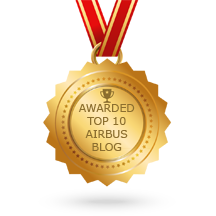Lufthansa Airbus A350 Returns From Mammoth Falklands Trip
Today, one of Lufthansa’s Airbus A350-900 aircraft returned from the Falkland Islands. At 14 hours, the flight clocked in at around an hour and a half shorter than the outbound journey on Monday.

Travel restrictions have led to specific airlines’ aircraft being spotted in a range of unusual places. This has extended to Lufthansa, whose Airbus A380s and Boeing 747s were seen in New Zealand. In contrast, Air New Zealand’s aircraft made a rare appearance in Frankfurt on the other end of the route. More recently, Qantas has also visited Frankfurt as part of its effort to repatriate stranded Australians.
30 hours of flying
This week Lufthansa completed its longest flight since the German flag carrier was founded. D-AIXP, one of the airline’s newer Airbus A350 aircraft, flew non-stop from Hamburg in Germany to Mount Pleasant in the Falkland Islands. Departing Sunday evening, the 15-hour, 36-minute flight touched down the next day. D-AIXP is just a year old.
Since arriving, the crew, including ground handlers and mechanics, have been resting in quarantine. Then, at 19:20 yesterday, the aircraft departed, bound for its Munich home. Despite leaving 20 minutes late, the plane arrived in Munich at 13:25, 35 minutes ahead of schedule. As such, the return flight took 14 hours and five minutes. It was the furthest non-stop flight that has ever arrived in Munich.

However, it wasn’t just long flights that broke Lufthansa and airport records. The airline also broke its record for the longest continuous crew duty period. As the crew was required to quarantine for 14 days before the trip, with the time spent in the Falklands included, the entire duty trip took 20 days for the crew. While it sounds like an intense assignment, interest from Lufthansa employees was incredible. Over 600 signed up for the 16 crew places.
A lighter return load
According to Lufthansa, the flight had a much lighter load on the return. On the way out, the aircraft had 16 members of the crew, in addition to 92 passengers (and a stuffed toy penguin). The passengers were spread across the business and economy cabin, with each being given enough space to lie flat on seats.
On the way back, the flight carried just 40 passengers who had disembarked the Polarstern research vessel, in addition to the original flight crew. As the Falkland Islands could not service the aircraft, all the waste from the outbound flight was also brought back to Germany. Lufthansa has two Airbus A350-900 configurations. This aircraft has 48 business class seats meaning that everybody would’ve had a lie-flat business class seat, and there would’ve been plenty of space to explore in the economy cabin.


No comments:
Post a Comment